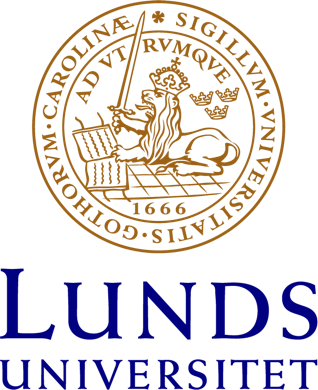Left-right orientation: the aesthetic preference in images from a semiotic point of view
Piero Polidoro
According to Heinrich Wölfflin it is not possible to mirror an image without altering its visual effect (in Semiotics we would say: “without altering its plastic meaning”). The same opinion has been expressed by other scholars and artists, such as Wassily Kandinsky (1926) and Rudolf Arnheim (1954).
Actually, there are two different questions at stake. First: visual elements are perceived as having different “weights” or importance if they are in the left part or in the right part of an image. Second: visual vectors produce different effects depending on their being leftward or rightward. According to Arnheim there is a tendency that leads us to prefer rightward pictorial movements and to feel leftward ones as “unnatural”.
Some studies from Psychology of perception and Neurosciences try to explain (or at least correlate) these phenomena with brain lateralization (Levy 1976; Beaumont 1985; Mead and McLaughlin 1992): left-right aesthetic preference would be caused by functional differences between cerebral hemispheres (concerning for instance visuo-spatial tasks, cognitive attention, face recognition, handedness).
An alternative explanation is based on cultural factors, i.e. reading and writing habits (Nachson, Argaman and Luria 1999; Chokron and De Agostini 2000; Dobel, Diesenbruck and Bölte 2007). In this case left-right tendency would not be due to an innate cerebral predisposition, but to acquired schemata that derive from cultural conventions.
Experimental results do not offer clear evidences for either hypothesis. For instance, Treiman and Allaith (2013) report data contrasting with those of a similar experiment by Chokron and De Agostini (2000); Friedrich and Elias (2016) list a series of contrasting studies in literature.
Data interpretation is complicated by the possible influence of top-down cultural mechanisms, as Freimuth and Wapner (1979) showed, modifying exposure time to the stimulus.
In recent years mixed hypotheses have often been proposed. According to Ishii et al. (2011), for instance, cultural habits may reinforce or reduce a natural bias towards rightward images.
Left-right orientation aesthetic preference is very interesting theme for Cognitive semiotics, because it lies at the intersection between perception and aesthetic effects and, perhaps, between bottom-up and top-down processes.
In my talk I will discuss, from a semiotic point of view, some aspects of this topic, such as the importance of semantic features and cultural and historical variations in these biases.
I will also propose an hypothesis on the cultural origin of left-right tendency of visual vectors (Polidoro 2004). This hypothesis is not based on new or experimental data, but on a comparative analysis of existing literature and it should be considered a theoretical suggestion of a research direction. In addition, it is inspired by a conception (Meyer 1956; Eco 1962) according to which aesthetic effects may have (also) an inferential basis (Polidoro 2015). This hypothesis consists in relating rightward bias and its “aesthetic” effect not to a generic “reading habit”, but to the expectancies deriving from this habit. These expectancies would produce inferential activity in the subject and consequent verification processes. The dynamic of inference production/verification (and its possible influence on single saccadic movements) could be at the basis of the aesthetic aspects of this bias.
References
Arnheim, R. (1954), Art and Visual Perception: a Psychology of the Creative Eye, University of California Press.
Baumont, J.G. (1985), “Lateral organization and aesthetic preference: the importance of peripheral visual asymmetries”, Neuropsychologia, 23, 103-113.
Chokron, S., De Agostini, M. (2000), “Reading habits influence aesthetic preference”, Cognitive Brain Research, 10, 45-49.
Dobel, C., Diesendruck, G., Bölte, J. (2007), “How writing system and age influence spatial representation of actions”, Psychological Sciences, 18, 6, 487-491.
Eco, U. (1962), Opera aperta [The Open Work], Bompiani, Milano.
Freimuth, M., Wapner, S. (1979), “The influence of lateral organization on the evaluation of paintings”, in British Journal of Psychology, 73, 211-218.
Friedrich, T.E., Lorin, J.E. (2016), “The write bias: the influence of native writing direction on aesthetic preference bias”, Psychology of Aesthetic, Creativity and the Arts, 10, 128-133.
Ishii, Y., Okubo, M., Nicholls, M.E.R., Imai, H. (2011), “Lateral biases and reading direction: a dissociation between aesthetic preference and bisection”,
Kandinsky, W. (1926), Punkt und Linie zu Fläche, Langen, München.
Levy, J. (1976), “Lateral dominance and aesthetic preference”, in Neuropsychologia, 14, 431-445.
Mead, A.M., McLaughlin, J.P. (1992), “The roles of handedness and stimulus asymmetry in aesthetic preferences”, in Brain and Cognition, 20, 300-307.
Meyer, L.B. (1956), Emotion and Meaning in Music, University of Chicago Press, Chicago.
Nachson, I., Argaman, E., Luria, A. (1999), “Effects of directional habits and handedness on aesthetic preferences for left and right profile”, Journal of Cross-cultural Psychology, 30, 104-116.
Polidoro, P. (2004), “Inferenze, tensioni e metafore: i meccanismi del linguaggio plastico” [Inferences, tensions and metaphors: mechanisms of plastic language”], Versus, 98-99, 39-66.
Polidoro, P. (2015), “L’attività inferenziale e le aspettative nel pensiero estetico di Umberto Eco” [Inferential activity and expectancies in Umberto Eco’s aesthetic thought], Zagadnienia Rodzajów Literackich, 58, 116, 63-74.
Treiman, R., Allaith, Z. (2013), “Do reading habits influence aesthetic preferences?”, Reading and Writing: An Interdisciplinary Journal, 26, 8, 1381-1386.
